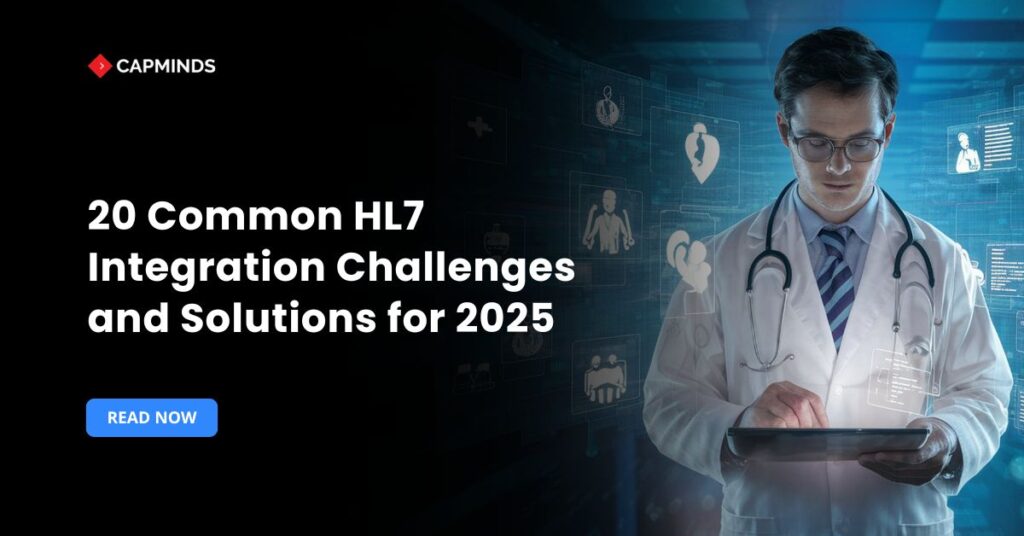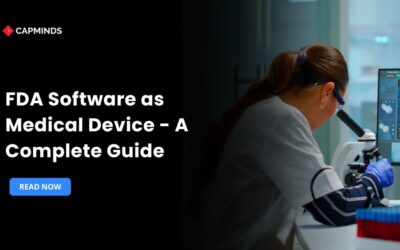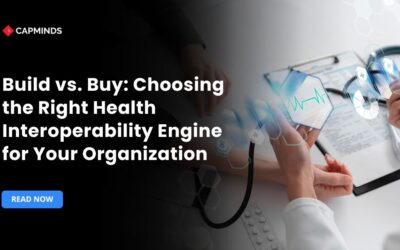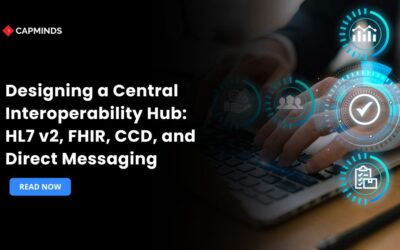20 Common HL7 Integration Challenges and Solutions for 2025
Healthcare organizations in 2025 face ever-increasing demands for seamless healthcare data exchange and interoperability. HL7 integration remains a core challenge for connecting electronic health records, medical devices, and diverse healthcare applications to achieve true interoperability.
Modern trends such as FHIR, APIs, cloud computing, and IoT add new layers of complexity to integration efforts. In this blog post, we explore 20 common HL7 integration challenges and practical solutions, covering technological advances, security practices, performance standards, and compliance requirements.
Related: What is HL7 FHIR Standard – A Detailed Guide
20 HL7 Integration Challenges and Solutions
Challenge 1: Legacy System Compatibility
Many providers still rely on legacy EHRs and systems that use older HL7 v2 messaging. Integrating these with modern software poses compatibility challenges due to outdated data formats, protocols, and interfaces. Interoperability gaps between legacy systems and new applications can slow down data exchange and delay patient care.
Solution: Use modern middleware or an interface engine that supports multiple HL7 versions. Implement data translators or adapters to normalize legacy HL7 v2 messages into current standards. Plan for phased upgrades of legacy systems, ensuring backward compatibility. For example:
- Deploy an HL7-capable integration engine to map legacy HL7 fields to a canonical data model.
- Gradually modernize interfaces by adding secure API endpoints or FHIR adapters on top of legacy systems.
- Conduct rigorous regression tests on legacy interfaces after any upgrade to avoid disruptions.
Challenge 2: Multiple HL7 Standards and Versions
Healthcare data exchange involves multiple HL7 standards, plus the newer FHIR standard. Managing and translating between these is confusing and error-prone. If sender and receiver systems use mismatched versions or inconsistent profiles, messages can fail or be misinterpreted.
Solution: Maintain a flexible integration layer that handles all relevant HL7 standards. Adopt a common interoperability framework or canonical data model to translate between HL7 v2, HL7 v3, CDA, and FHIR. When implementing FHIR for new use cases, ensure the integration engine can also convert older HL7 messages as needed. Key tactics include:
- Use an integration platform that supports HL7 v2. x, v3, CDA, and FHIR natively.
- Build and maintain a library of mappings and transformation rules for each HL7 version and FHIR profile in use.
- Establish governance processes to manage updates whenever HL7/FHIR standards evolve, ensuring all systems stay in sync.
Read this guide – HL7 FHIR at Scale: Integration Framework for Multi-Vendor Environments
Challenge 3: Data Mapping and Transformation Complexity
HL7 interfaces often require complex mapping between data fields in different systems. Variations in segment names, field formats, units, and code sets mean that one system’s message may not directly align with another’s. Complex transformations can introduce errors if not carefully managed.
Solution: Leverage robust integration tools and middleware with strong mapping capabilities. Develop standardized mapping templates for common HL7 transactions. Involve clinical experts to validate mappings. Strategies include:
- Use an integration engine that provides visual mapping and built-in HL7 connectors.
- Adopt a canonical model as an intermediary to simplify transformations across systems.
- Document mapping rules and maintain a repository of reusable transformation logic to ensure consistency across projects.
Challenge 4: Data Quality and Validation
Inconsistent or incomplete data in HL7 messages can undermine patient safety. Missing required fields, invalid code values, and inconsistent formats are common issues. With growing volumes of data, poor data quality can lead to misinterpretation or errors in clinical decision support.
Solution: Implement comprehensive data validation and cleansing. Perform validation at the interface level to flag or reject invalid messages. Use standardized code sets and enforce format checks. Effective practices include:
- Apply HL7 schema or rule-based checks on incoming messages to catch format errors and missing fields.
- Normalize code systems by using a terminology server that translates local codes to standards.
- Monitor data quality metrics and set up alerts for unusual patterns or frequent errors, ensuring problems are addressed quickly.
Challenge 5: Workflow and Message Routing
Healthcare workflows often involve complex routing rules. For example, a lab result may need to go to multiple departments. Implementing and maintaining these workflows in HL7 interfaces, while preserving message integrity and timeliness, is challenging.
Solution: Define clear, documented routing rules that align with clinical workflows. Utilize advanced routing and workflow features in integration platforms. Examples include:
- Use a rules engine to direct messages based on content.
- Implement message queuing so systems can subscribe to relevant HL7 events, decoupling senders and receivers.
- Regularly review and update routing logic as workflows evolve, and simulate end-to-end scenarios to validate routing rules.
Related: How Does HL7 FHIR Workflow Work? A Complete Beginner’s Guide
Challenge 6: Scalability and Performance
HL7 integration systems must handle growing volumes of messages – from thousands per day in a small clinic to millions across large health networks. Bottlenecks can occur at peak times. Without a scalable architecture, performance issues like slow throughput or lost messages can impact patient care.
Solution: Design for scalability from the start. Deploy integration engines on scalable infrastructure such as cloud or containerized clusters. Use load balancing and horizontal scaling for HL7 message processing. Key tactics include:
- Use cloud or Kubernetes clusters that can automatically grow with demand.
- Use message brokers to buffer peak loads and decouple system dependencies.
- Use efficient transport protocols and minimize unnecessary data transformations.
- Conduct stress tests and load tests under realistic peak scenarios to identify and address bottlenecks early.
Challenge 7: Real-Time and Event-Driven Integration
Modern healthcare requires more real-time data exchange. Traditional HL7 batch interfaces or periodic polling can be too slow for immediate clinical needs. Delays in data propagation can adversely affect patient outcomes.
Solution: Implement event-driven architectures for HL7 integration. Use real-time messaging protocols and enable event notifications. For instance:
- Use an event bus so critical messages are delivered instantaneously to all interested systems.
- Where possible, employ webhooks or API callbacks from systems for instant data delivery.
- Configure the integration engine to prioritize critical message types to ensure they are processed with minimal latency.
Challenge 8: Security and Patient Privacy
Protecting patient data is paramount. HL7 messages carry sensitive health information that must be kept confidential and secure. Challenges include preventing data breaches, unauthorized access, and ensuring compliance with regulations during transmission and storage.
Solution: Adopt end-to-end security measures across all HL7 interfaces. Encrypt HL7 messages in transit and at rest using modern standards. Implement strong authentication and authorization. Best practices include:
- Use VPNs or secure gateways when HL7 interfaces cross network boundaries, and enforce TLS for all connections.
- Implement role-based access controls and multi-factor authentication on systems that send or receive HL7 data.
- Maintain detailed logs of all HL7 transactions and access events to support forensic analysis and compliance audits.
- Keep integration middleware and servers patched and up-to-date to protect against known vulnerabilities.
Challenge 9: API and Microservices Integration
There is a growing shift toward API-driven integration and microservices in healthcare. Many legacy interfaces still rely on file-based or MLLP-based HL7 exchanges. Combining these with RESTful APIs requires bridging different architectures and often redesigning integration logic.
Solution: Modernize HL7 interfaces with API gateways and microservices. Develop RESTful APIs using FHIR where appropriate, and use API management tools to secure them. Strategies include:
- Deploy an API gateway or management platform to expose HL7 services as secure, monitored APIs.
- Refactor integration functionality into smaller services that communicate via APIs.
- Create API or service wrappers around legacy HL7 interfaces so new apps can use modern protocols without disrupting old systems.
Challenge 10: Adopting FHIR and Emerging Standards
Fast Healthcare Interoperability Resources (FHIR) and other emerging standards are becoming mainstream. Integrating FHIR into existing HL7 v2 environments and convincing stakeholders to adopt new models can be challenging.
Many organizations must balance supporting new FHIR-based data models with existing legacy workflows. Ensuring consistency between FHIR resources and traditional HL7 messages requires careful planning.
Solution: Embrace FHIR as a complementary standard. Train development teams on FHIR concepts and map key workflows to FHIR resources. Use FHIR interoperability tools like SMART on FHIR apps to pilot integrations. Key steps include:
- Start with a pilot FHIR interface for a specific use case.
- Maintain mappings between common HL7 v2 messages and their FHIR equivalents.
- Keep up with HL7’s latest developments (e.g. C-CDA on FHIR, CDS Hooks) and participate in interoperability initiatives to guide adoption strategy.
Challenge 11: Cloud and Hybrid Integration
Many healthcare organizations are migrating applications to the cloud or adopting hybrid environments. Ensuring secure and reliable HL7 data exchange across cloud and on-premise systems introduces challenges such as network latency, data residency requirements, and compatibility of cloud platforms with healthcare standards.
Solution: Use cloud-friendly integration platforms or Integration Platform as a Service (iPaaS) that support healthcare standards. Consider:
- Choose cloud services and tools that are HIPAA-compliant and can handle PHI securely.
- Establish secure VPNs or direct connections to minimize latency and ensure data security.
- Leverage managed HL7/FHIR services or virtual appliances in the cloud to simplify maintenance.
- Implement data synchronization strategies to keep cloud and on-prem systems in sync.
Challenge 12: IoT and Medical Device Integration
The rise of medical IoT devices generates large volumes of data. Integrating this device data into EHRs using HL7 standards can be difficult. Many IoT devices use proprietary protocols or data formats, requiring custom solutions to translate into HL7.
Solution: Leverage IoT gateways and standards to translate device data into HL7 or FHIR formats. For example:
- Use an edge compute device or gateway that collects sensor data and converts it into HL7 ORU or FHIR Observation resources.
- Where possible, adopt medical device data standards (such as IEEE 11073) that can be mapped to HL7.
- Work with device vendors that support FHIR-based streaming or APIs for vital signs, integrating this data directly into clinical systems.
- Ensure devices and systems use synchronized clocks and unique device identifiers so that data can be accurately associated with patients.
Challenge 13: Telehealth and Remote Monitoring Data
Telehealth platforms produce HL7 data for virtual visits, patient surveys, and remote monitoring. Integrating telehealth data into the main EHR systems while maintaining continuity of care can be challenging.
For instance, telehealth encounters may generate new data forms that require special handling. The pandemic accelerated telehealth adoption, leaving many organizations scrambling to integrate these interfaces.
Solution: Standardize telehealth integration by defining HL7/FHIR interfaces for virtual care data. Consider:
- Create HL7 message profiles or FHIR resources for telehealth encounters.
- Use FHIR workflows or C-CDA documents to link telehealth records to existing patient encounters.
- Ensure telehealth apps adhere to the same patient identity and consent frameworks as in-clinic workflows.
- Work with telehealth solution providers to support standard HL7 or FHIR outputs instead of proprietary methods.
Challenge 14: Patient Identity and Master Patient Index
Ensuring that HL7 messages across systems refer to the correct patient is fundamental. Disparate systems might use different identifiers, leading to duplicate records or mis-merged data. A fragmented MPI hampers data exchange and can jeopardize patient safety and privacy.
Solution: Implement a robust Master Patient Index or patient matching solution. Best practices include:
- Use probabilistic or deterministic matching algorithms to reconcile patient identities across systems.
- Assign a unique enterprise-wide patient ID that all HL7 interfaces reference.
- Include additional identifiers in messages to improve match confidence.
- Regularly audit duplicate records and employ manual review processes for exceptions to continually improve match accuracy.
Challenge 15: Data Governance and Standard Terminologies
Consistent meaning of data elements is crucial for interoperability. Different hospitals may use different code sets or value conventions. Without governance, two systems exchanging HL7 messages may interpret the same value differently, leading to clinical confusion.
Solution: Establish enterprise data governance around HL7 content. Align on standard terminologies and code systems. Approaches include:
- Adopt a common vocabulary in all systems.
- Use a terminology server or mapping tool to translate local codes in HL7 messages to standard codes.
- Create and enforce HL7 message templates or implementation guides that specify required segments and code lists.
- Form a cross-functional data governance committee to manage updates, resolve discrepancies, and train stakeholders on standards.
Challenge 16: Interoperability Governance and Collaboration
Integration often involves multiple stakeholders (clinicians, IT teams, vendors, external partners). Lack of clear governance and data sharing policies can stall projects. Coordinating changes among different departments or organizations is difficult without a shared strategy.
Solution: Develop a governance framework for interoperability. Include representatives from all stakeholder groups. Key elements:
- Establish an interoperability governance board to oversee HL7 standards adoption and interface development priorities.
- Define clear policies for data sharing, consent, and interface ownership across organizational boundaries.
- Use formal project management practices to coordinate multi-party interface projects with defined roles and timelines.
- Encourage regular collaboration where technical teams share interface requirements and lessons learned.
Challenge 17: Regulatory Compliance and Auditing
Healthcare data exchange must comply with regulations such as HIPAA, HITECH, and, for international data, GDPR. Auditors and regulators require evidence of compliance for all data flows. Implementing the required controls in HL7 interfaces (like audit logging, encryption, and user consent) is non-trivial.
Solution: Integrate compliance into the design of all HL7 interfaces. Steps include:
- Ensure all HL7 transmissions are encrypted and authenticated as per regulatory guidelines.
- Maintain detailed audit logs of who accessed or modified patient data across interfaces.
- Implement data de-identification or consent tracking if data is used beyond direct patient care.
- Conduct periodic risk assessments and compliance audits of the integration environment to identify and fix any gaps in controls.
Challenge 18: Monitoring, Maintenance, and Error Handling
Once HL7 interfaces are live, ongoing monitoring and support are critical. Errors or bottlenecks can occur at any time, and without proactive monitoring, these may go unnoticed. A lack of proper alerting or visibility into interface health leads to delays in issue resolution and can impact patient care.
Solution: Set up comprehensive monitoring and alerting for HL7 interfaces. Best practices:
- Use an integration platform or monitoring tool that provides dashboards on message success rates, queue lengths, and latency.
- Configure alerts for failed messages, queue buildups, or interface downtime so that issues are addressed quickly.
- Implement automatic retry logic for transient failures, and escalate persistent errors to on-call support.
- Schedule regular maintenance windows to apply patches and perform optimizations without disrupting clinical operations.
Challenge 19: Training, Skills, and Change Management
Healthcare IT teams need specialized knowledge to build and maintain HL7 interfaces. Many organizations lack staff with deep HL7 expertise or up-to-date training on evolving standards.
Additionally, rolling out new integration processes requires effective change management so that clinical and operational staff adopt them correctly.
Solution: Invest in training and capacity building. Practical steps:
- Provide targeted training on HL7 v2/v3 and FHIR standards for developers and analysts.
- Cross-train team members in both technical integration skills and clinical workflows to bridge understanding.
- Develop clear interface documentation and runbooks so new staff can quickly learn the environment.
- Involve end users early, pilot new integrations in a test setting, and gather feedback to refine processes before full rollout.
Challenge 20: Disaster Recovery and Business Continuity
HL7 interfaces support critical clinical workflows. An interface outage can disrupt patient care. Ensuring high availability and a solid disaster recovery plan for the integration infrastructure is essential but often overlooked until an outage occurs.
Solution: Build resilience into HL7 integration systems. Measures include:
- Deploy redundant integration servers and databases so no single point of failure exists.
- Establish backup communication channels or fallback procedures if primary interfaces go down.
- Regularly test disaster recovery plans by simulating outages and verifying that interfaces can be restored quickly.
- Document manual workarounds and recovery procedures, so clinical staff know how to proceed if systems are offline briefly.
CapMinds HL7 FHIR Service for Healthcare Practice
CapMinds offers the best all-in-one health interoperability solution for healthcare practices. Our HL7 FHIR service will understand your clinical needs and requirements to cater to our solution.
We have years of experience in this field, faced many challenges, and tackled them with ease.
Why can CapMinds be your Go-to Interoperability Solution?
- We are experienced professionals with extensive backgrounds in the field.
- Our technical team is an expert that will analyze your healthcare practice thoroughly to tailor the Interoperability solution.
- We prioritize safety, security, encryption, and authentication to protect the data of your healthcare practice’s patients.
- Our comprehensive solution ensures seamless interoperability, adhering to industry standards and using standard protocols.
- We offer comprehensive training sessions to healthcare staff.
- Our affordable health interoperability solution benefits healthcare practices at all levels.
If you are searching for the best interoperability service for your practice, CapMinds is your choice. We can assist you by navigating all potential challenges and ensuring seamless health data exchange.
Reach out to CapMinds Health Data Exchange Solutions for your Healthcare Practice.




